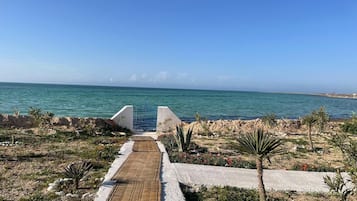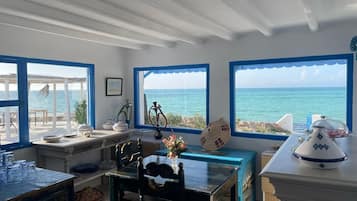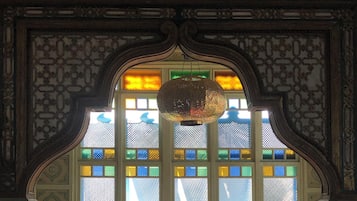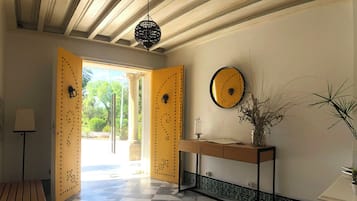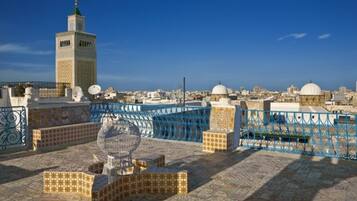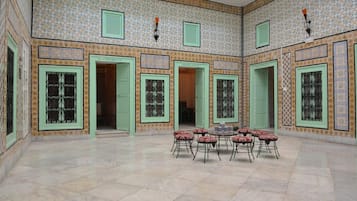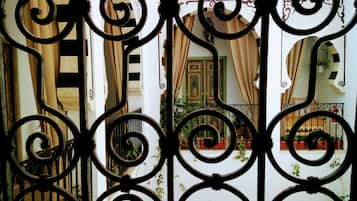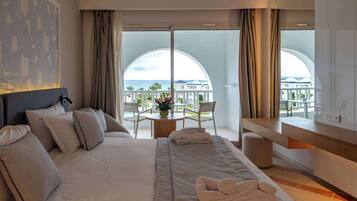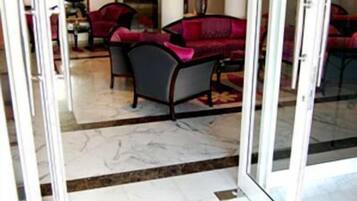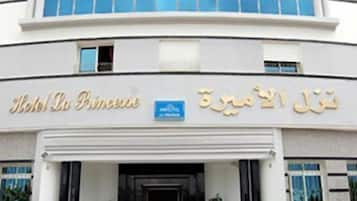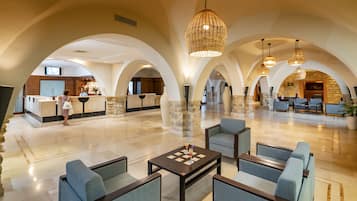โรงแรมปลอดบุหรี่ในตูนิเซีย
- เปลี่ยนใจได้เสมอจองโรงแรมที่ยกเลิกได้ฟรี
- เลือกได้มากค้นหาจากที่พักเกือบล้านแห่งทั่วโลก
ดูห้องว่างที่โรงแรมปลอดบุหรี่ใน ตูนิเซีย
คืนนี้
พรุ่งนี้
สุดสัปดาห์นี้
สุดสัปดาห์หน้า
ตัวเลือกโรงแรมปลอดบุหรี่ยอดนิยมของเราใน ตูนิเซีย
ราคาปัจจุบันคือ ฿1,718
ราคารวม ฿1,977
รวมภาษีและค่าธรรมเนียม
1 ม.ค. - 2 ม.ค. 2026
ราคาปัจจุบันคือ ฿3,643
ราคารวม ฿4,096
รวมภาษีและค่าธรรมเนียม
4 ม.ค. - 5 ม.ค. 2026
ราคาปัจจุบันคือ ฿4,373
ราคารวม ฿4,899
รวมภาษีและค่าธรรมเนียม
12 ธ.ค. - 13 ธ.ค.
ราคาปัจจุบันคือ ฿3,140
ราคารวม ฿3,718
รวมภาษีและค่าธรรมเนียม
12 ธ.ค. - 13 ธ.ค.

9.4 จาก 10, ไร้ที่ติ, (39)
ราคาปัจจุบันคือ ฿2,193
ราคารวม ฿2,457
รวมภาษีและค่าธรรมเนียม
5 ม.ค. - 6 ม.ค. 2026
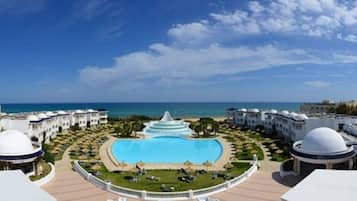
4.8 จาก 10, (3)
ราคาปัจจุบันคือ ฿3,794
ราคารวม ฿4,434
รวมภาษีและค่าธรรมเนียม
5 ม.ค. - 6 ม.ค. 2026
ราคาต่อคืนที่ถูกที่สุดที่พบใน 24 ชั่วโมงที่ผ่านมา อ้างอิงจากการเข้าพัก 1 คืน ผู้เข้าพัก 2 คน ราคาและจำนวนห้องพักว่างอาจมีการเปลี่ยนแปลง อาจมีข้อกำหนดเพิ่มเติม
เมื่อเข้าสู่ระบบจะได้รับส่วนลดโดยเฉลี่ยเพิ่มอีก 15% จากหลายพันโรงแรมที่ร่วมรายการ
รีวิวโรงแรม ตูนิเซีย ยอดนิยม
เรียนรู้เพิ่มเติมเกี่ยวกับ ตูนิเซีย
คู่มือท่องเที่ยว: ��โรงแรมปลอดบุหรี่ในตูนิเซีย
ค้นหาโรงแรมปลอดบุหรี่ในตูนิเซียได้ที่ Expedia.co.th คุณสามารถค้นหาโรงแรมของคุณได้อย่างง่ายๆ โดยใช้วิธีใดวิธีหนึ่งดังต่อไปนี้
- ชมตัวเลือกโรงแรมปลอดบุหรี่ในตูนิเซีย บนเว็บของเรา
- ใช้แผนที่เพื่อค้นหาโรงแรมปลอดบุหรี่ในตูนิเซียที่คุณต้องการ
- ใช้ฟิลเตอร์เพื่อค้นหาโรงแรมปลอดบุหรี่ในตูนิเซีย เลือกธีม แบรนด์ หรือระดับโรงแรมจากโรงแรมราคาประหยัด (1 ดาว) ไปจนถึงโรงแรมหรู (5 ดาว)
- ใส่ข้อมูลวันเดินทางของคุณเพื่อดูข้อเสนอที่ดีที่สุดสำหรับโรงแรมปลอดบุหรี่ในตูนิเซีย ในขณะที่ยังมีข้อเสนอนี้อยู่
อย่าลืมสะสมคะแนน! สมัคร Expedia Rewards ก่อนแล้วค่อยทำการจอง หรือมีบัญชีอยู่แล้วก็อย่าลืมเข้าสู่ระบบก่อนจองทุกครั้ง พร้อมรับคะแนน X2 เมื่อจองผ่าน Expedia Application และประหยัดได้มากขึ้นเมื่อคุณจองเที่ยวบินหรือแพ็คเกจบนเอ็กซ์พีเดีย
สำรวจโลกแห่งการเดินทางไปกับเอ็กซ์พีเดีย
โรงแรมและที่พักตูนิเซียในแบบต่างๆ
- โรงแรมมีห้องอาหาร ใน ตูนิเซีย
- โรงแรมมี Wi-Fi ใน ตูนิเซีย
- โรงแรมมีสระว่ายน้ำ ใน ตูนิเซีย
- โรงแรมสำหรับครอบครัว ใน ตูนิเซีย
- โรงแรมมีบาร์ ใน ตูนิเซีย
- โรงแรมริมทะเล ใน ตูนิเซีย
- โรงแรมมีสปา ใน ตูนิเซีย
- โรงแรมธุรกิจ ใน ตูนิเซีย
- โรงแรมพร้อมสนามกอล์ฟ ใน ตูนิเซีย
- โรงแรมมีฟิตเนส ใน ตูนิเซีย
- โรงแรมใกล้แหล่งช้อปปิ้ง ใน ตูนิเซีย
- โรงแรมมีรถรับส่งสนามบิน ใน ตูนิเซีย
- โรงแรมแบบรวมค่าใช้จ่ายทุกอย่าง ใน ตูนิเซีย
- โรงแรมมีความสำคัญทางประวัติศาสตร์ ใน ตูนิเซีย
- โรงแรมหรู ใน ตูนิเซีย
- โรงแรมคาสิโน ใน ตูนิเซีย
- โรงแรมสัตว์เลี้ยงเข้าพักได้ ใน ตูนิเซีย
- โรงแรมสำหรับจัดงานแต่งงาน ใน ตูนิเซีย
- โรงแรมสำหรับคู่รัก ใน ตูนิเซีย
- โรงแรมราคาถูก ใน ตูนิเซีย
ประเภทอื่นๆ
- โรงแรมแบบรวมค่าใช้จ่ายทุกอย่าง
- โรงแรมมีบาร์
- โรงแรมริมทะเล
- โรงแรมบูติก
- โรงแรมราคาถูก
- โรงแรมธุรกิจ
- โรงแรมคาสิโน
- โรงแรมมีห้องอาหาร
- โรงแรมสำหรับครอบครัว
- โรงแรมมีฟิตเนส
- โรงแรมพร้อมสนามกอล์ฟ
- โรงแรมมีความสำคัญทางประวัติศาสตร์
- เซอร์วิสอพาร์ทเมนต์
- โรงแรมต้อนรับ LGBTQIA+
- โรงแรมหรู
- โรงแรมสัตว์เลี้ยงเข้าพักได้
- โรงแรมมีสระว่ายน้ำ
- โรงแรมสำหรับคู่รัก
- โรงแรมใกล้แหล่งช้อปปิ้ง
- โรงแรมสกี
- โรงแรมมีสปา
- โรงแรมมีรถรับส่งสนามบิน
- โรงแรมมีสวนน้ำ
- โรงแรมสำหรับจัดงานแต่งงาน
- โรงแรมมี Wi-Fi
- โรงแรมมีไร่องุ่น
- โรงแรมมีห้องโยคะ
โรงแรมราคาถูกใกล้ตูนิเซีย
เทรนด์ล่าสุดจากเอ็กซ์พีเดีย
เที่ยวบิน
แพ็กเกจ
ทั่วไป
- เยี่ยมชม มาดากัสการ์
- เยี่ยมชม สาธารณรัฐประชาธิปไตยคองโก
- เยี่ยมชม โกตดิวัวร์
- เยี่ยมชม แองโกลา
- เยี่ยมชม บูร์กินาฟาโซ
- เยี่ยมชม เคนยา
- เยี�่ยมชม โมร็อกโก
- เยี่ยมชม ลิเบีย
- เยี่ยมชม สาธารณรัฐคองโก
- เยี่ยมชม บอตสวานา
- เยี่ยมชม แคเมอรูน
- เยี่ยมชม แอฟริกาใต้
- เยี่ยมชม แทนซาเนีย
- เยี่ยมชม ไนจีเรีย
- เยี่ยมชม เซียร์ราลีโอน
- เยี่ยมชม โมซัมบิก
- เยี่ยมชม แอลจีเรีย
- เยี่ยมชม แซมเบีย
- เยี่ยมชม อิเควทอเรียลกินี
- เยี่ยมชม กาบอง
- เยี่ยมชม เซเชลส์
- เยี่ยมชม เรอูนียง

